Tintin and the Adventure to the Cinema
The boy journalist Tintin is one of the most popular character creations from Belgium, a national and cultural icon as well as a major part of the comic book museum in Brussels (it is certainly worth a look if you are ever in the city). Tintin and his globe-trotting adventures have delighted for generations, and finally, after 82 years since the first story, he has been given the big-screen treatment.
Still, some of you might be wondering just who this Tintin character is and why you should care. With 82 years of history, we thought you should at least know before mindlessly indulging in
The Adventures of Tintin this holiday season.
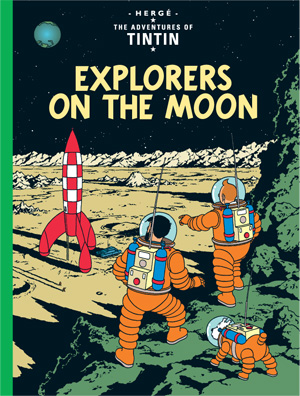 The Books
The Books
The Adventures of Tintin is the creation of Georges Prosper Remi, who worked under the pen name Hergé. Hergé wrote and illustrated 23 "Tintin" books, placing Tintin and his companions in adventures around the world and taking on gangsters in America and China, fascist regimes in Eastern Europe and South America as well as treasure hunting in the ruins of ancient civilizations. The series started with the Tintin in the
Land of the Soviets in 1929 and ended in 1976 with
Tintin and the Picaros. Hergé died in 1983 and the series died with him.
Despite the popularity and wide range of stories, Tintin had met his share of controversy. Hergé was met with criticism with
Tintin in the Congo because of its negative depiction of African people being naïve and primitive and charges of anti-Semitism because of the villain in
The Shooting Star. Both forced Hergé to edit them.
When I was younger, my personal favorite books were the space adventures
Destination Moon and
Explorers on the Moon.
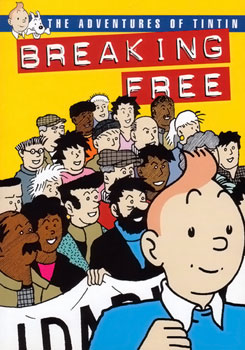 The Unofficial Books
The Unofficial Books
Hergé was the only person to write official "Tintin" books, but that did not mean it stopped others from making their own stories. One of the most famous is the British political satire
Breaking Free, which was published in 1988, turning the boy journalist into a wayward youth who suffers a political awakening and becomes a revolutionary socialist. Many were not fans of this alternative version.
Like many popular fictional characters, Tintin could not escape the pornographic industry either. One example was the 1999 comic
Tintin in Thailand where Tintin goes on a sex holiday. This publication ended up getting people arrested in Antwerp who tried to sell is as an as unpublished official work and the Hergé Foundation still takes action against anyone who tries to put it online.
The Early Movies
Before Steven Spielberg and Peter Jackson took Tintin to Hollywood, the French and Belgians made a few movie adaptations themselves. The first "Tintin" film ever made was a 60-minute 1947 stop-motion adaptation of
The Crab with the Golden Claws. The movie is still available to paying members of the Tintin club and available on DVD in France.
The only live action movies were
Tintin and the Golden Fleece and
Tintin and the Blue Orange, two French movies that used their own storylines. “The Golden Fleece” was a hit in France, but “The Blue Oranges” was a disappointment, ending that series.
Following the live-action attempts, "Tintin" turned to Belgian animation studio Belvision to do the job in the late '60s and early '70s. The first
Tintin and the Temple of the Sun, a combination of
The Seven Crystal Balls and
Prisoners of the Sun. The other being
Tintin and the Lake of Sharks, an original creation by Hergé’s friend comic book writer Greg (AKA Michel Regnier).
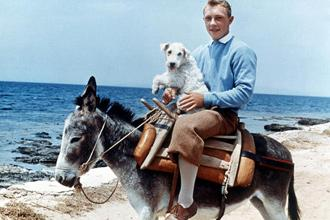
The Animated Shows
Like any good comic book series, "Tintin" was adapted into a cartoon series and there are two versions: one in the '60s and the other in the '90s. The first was Belvision’s
Herge’s Adventures of Tintin that ran from 1959 to 1963. There were 104 episodes, but Tintin purists were not happy with this series because it was disloyal to the source material.
The series I grew up with is
The Adventures of Tintin by Ellipse and Nelvana productions that ran from 1991 to 1993 and each episode ran for 30 minutes. I watched this French-Canadian co-production on Sunday mornings on Channel 4 in the UK and it was how I was introduced to the character. It had action, adventure around the world, drama, comedy, memorable characters and even the occasional death (which was very rare for a cartoon in the '90s). It had a variety of adventures from gangster plots to treasure hunting and I highly recommend checking it out.
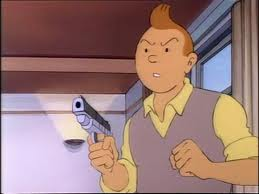 The Adventures of Tintin (2011)
The Adventures of Tintin (2011)
It took two Hollywood greats to finally put Tintin into a multi-million dollar blockbuster: Steven Spielberg and Peter Jackson. Both became fans of Hergé at different points in their lives, Jackson was a fan the books since he was a child, Spielberg only became interested after French reviews of
Raiders of the Lost Ark compared it to Tintin back in 1981. Spielberg bought the rights in the early '80s, but it still took nearly 30 years for his version to make it onto the silver screen. Spielberg certainly wanted a challenge because he rejected the chance to direct "Harry Potter" because he knew it going to be a box-office smash with or without him.
Spielberg originally planned to make
The Adventures of Tintin a live-action movie, but when he contacted Jackson about having Weta Digital do the special effects, the
Lord of the Rings director convinced Spielberg that animation was the only way to go. Jackson came aboard as a producer and acted as the second-unit director.
The Adventures of Tintin: Secret of the Unicorn (it's full international title) boasts a lot of British talent in front and behind the camera: Steven Moffat of
Doctor Who fame wrote the script, combining
The Crab with the Golden Claws,
The Secret of the Unicorn and
Red Rackham’s Treasure and Edgar Wright and Joe Cornish (
Attack the Block) took on the rewrites. Jamie Bell (
Billy Elliot) and motion capture actor Andy Serkis played the ironic double act of Tintin and Captain Haddock in what is certainly the best motion-capture movie made so far.
The Adventures of Tintin: Secret of the Unicorn has already made $239 million worldwide, but we need to wait to see if it can be a success stateside.
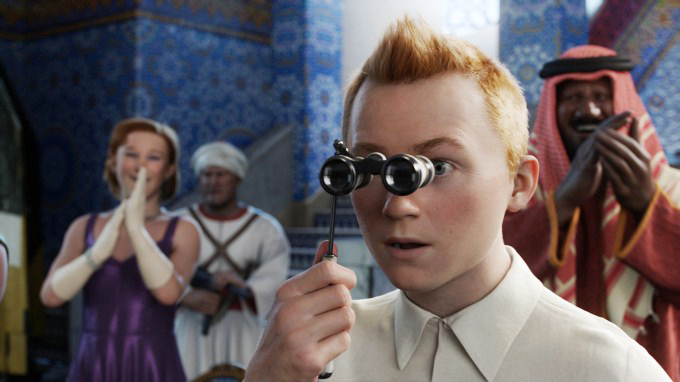 The Future
The Future
Depending on the success of their first film, Spielberg and Jackson have planned the future for the series, hoping to make two sequels. Jackson is set as director for the sequel that is currently being written by Children’s novelist Anthony Horowitz. It was originally suspected that
The Seven Crystal Balls and
Prisoners of the Sun were going to be adapted, but according to Horowitz that is all up in the air and he does a have lot of stories to choose from. Producer Kathleen Kennedy said that a second "Tintin" movie should be released on either Christmas 2014 or the summer of 2015.
Though the animated "Tintin" is entertaining, action-packed viewing, I personally would still like to see a big-budget live-action version someday. But I can not argue against the talent that is working on the series at the moment.
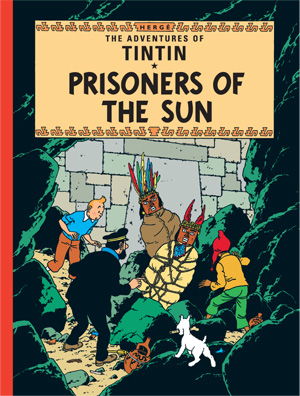
 The Books
The Books The Unofficial Books
The Unofficial Books


